“You have to take risks. We will only understand the miracle of life fully when we allow the unexpected to happen.”
Paulo Coelho
When Pamela Campagna creates textile art, her approach is to be open and intuitive; this allows the exciting – and even miraculous – possibility of new and unpredicted outcomes. It’s a place where accidents are positively welcomed.
Pamela’s irrepressible drive comes from her passion to gain an understanding of our presence here in the world. She calls upon her own personal experiences: constantly researching materials, techniques and forms that marry her thoughts and emotions into artworks.
Her starting material is often a long length of thread – a simple starting point leading to ethereal artwork that’s both complex and minimalist at the same time.
Pamela’s fascination with time, light, magnetism and space inspire her to explore other materials such as nails, magnets, rust and wood as a way to portray these qualities.
Pamela is a natural nomad who, after 20 years of travelling, is now based back in her home town of Bari in southern Italy. She’s been a graphic designer, an entrepreneur and now has her own atelier – a lovingly created hub where she shares her art and talent with the community.
She’s a dreamer who dreams big – and, for Pamela, this appears a very happy place to be.
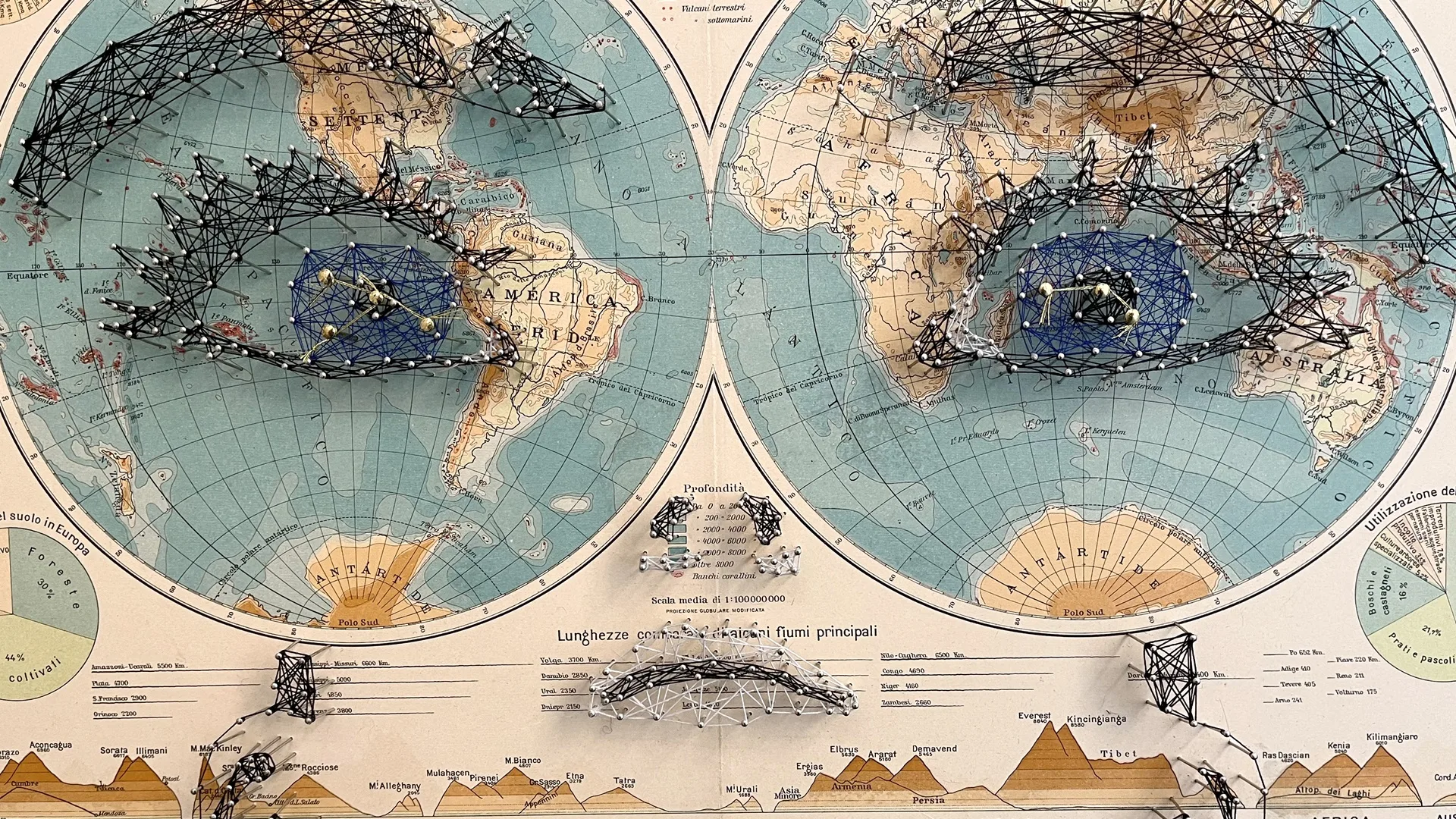
Pamela Campagna: I guess I’ve always had a passion for exploring and experimenting. I was born in Bari in 1977 and ever since I can remember I’ve felt the need to travel. When I grew up I went travelling for about 20 years until I became pregnant in 2019 and felt the need to have a stable base. So I’m back in Bari now … but that hasn’t stopped me from dreaming.
After re-settling here I decided to realise one of those dreams – to open an atelier to the public, a place that is both a working space and an art gallery. I wanted it to have a big window onto the street so that I could welcome people in to see how my art is made, to talk about the process and to learn.
I’ve not only achieved this dream, but it’s also slowly becoming a vibrant place for meetings and workshops for all kinds of arts. I find this exchange both inspiring and enriching.
I’m perhaps best known for adapting existing techniques into something all my own, particularly when working with threads, nails, magnets, rust and wood. The result is a reflection of my nomadic attitude, a wonderful mix of both graphics and crafts, with a focus on exploring our present and our presence.
Since 2011, the core of my artistic research has been experimenting with weaving techniques and image design. I mix graphics and crafts, always looking for new artistic ways that can help us to interpret and understand our presence.
“Through my constant research into different materials, techniques and forms, I aim to make the invisible become visible.”
Pamela Campagna, Thread artist
I create artworks that interact with time, light, magnetism and the environment, to change their appearance and significance, and reveal themselves in unpredicted and surprising ways.
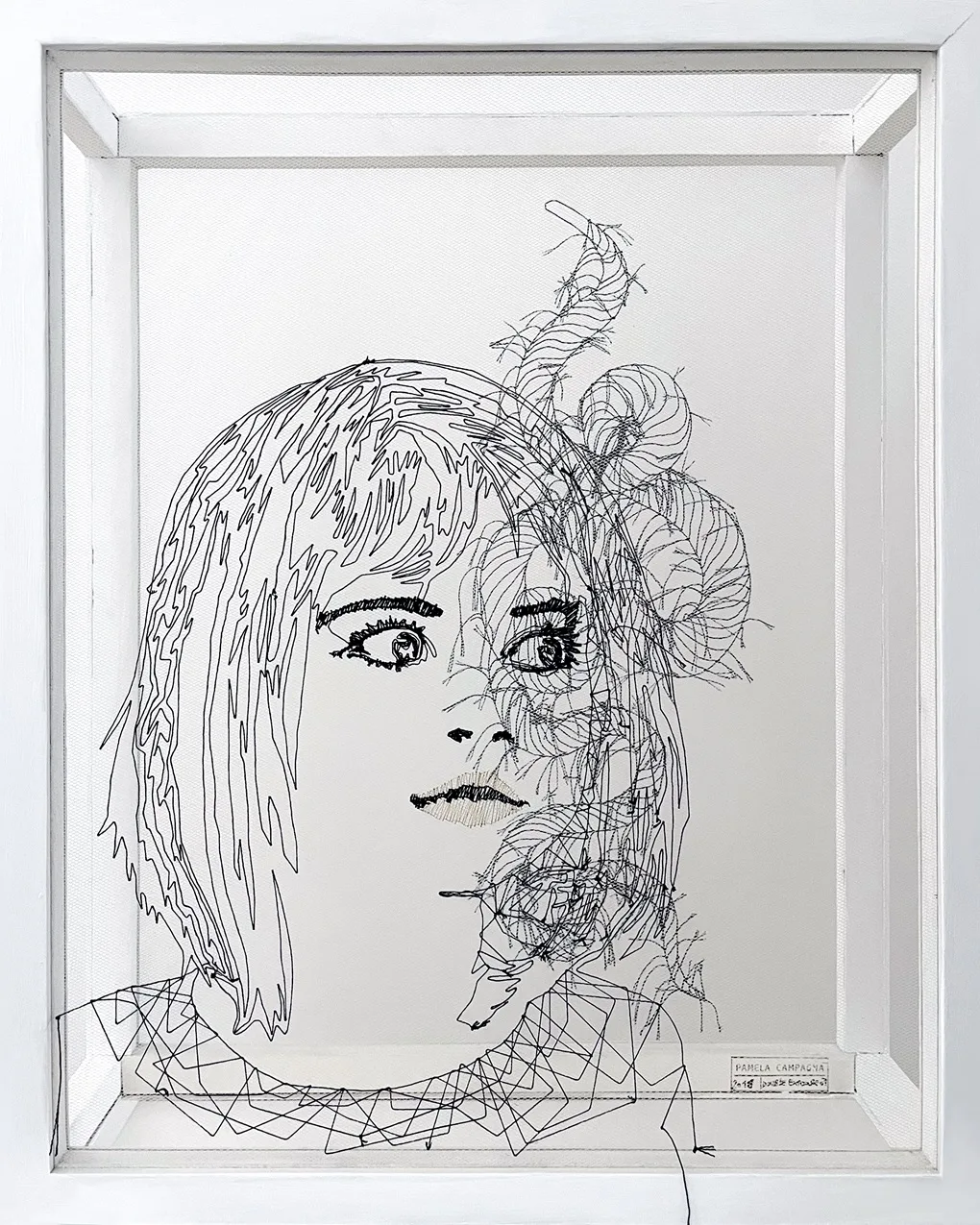
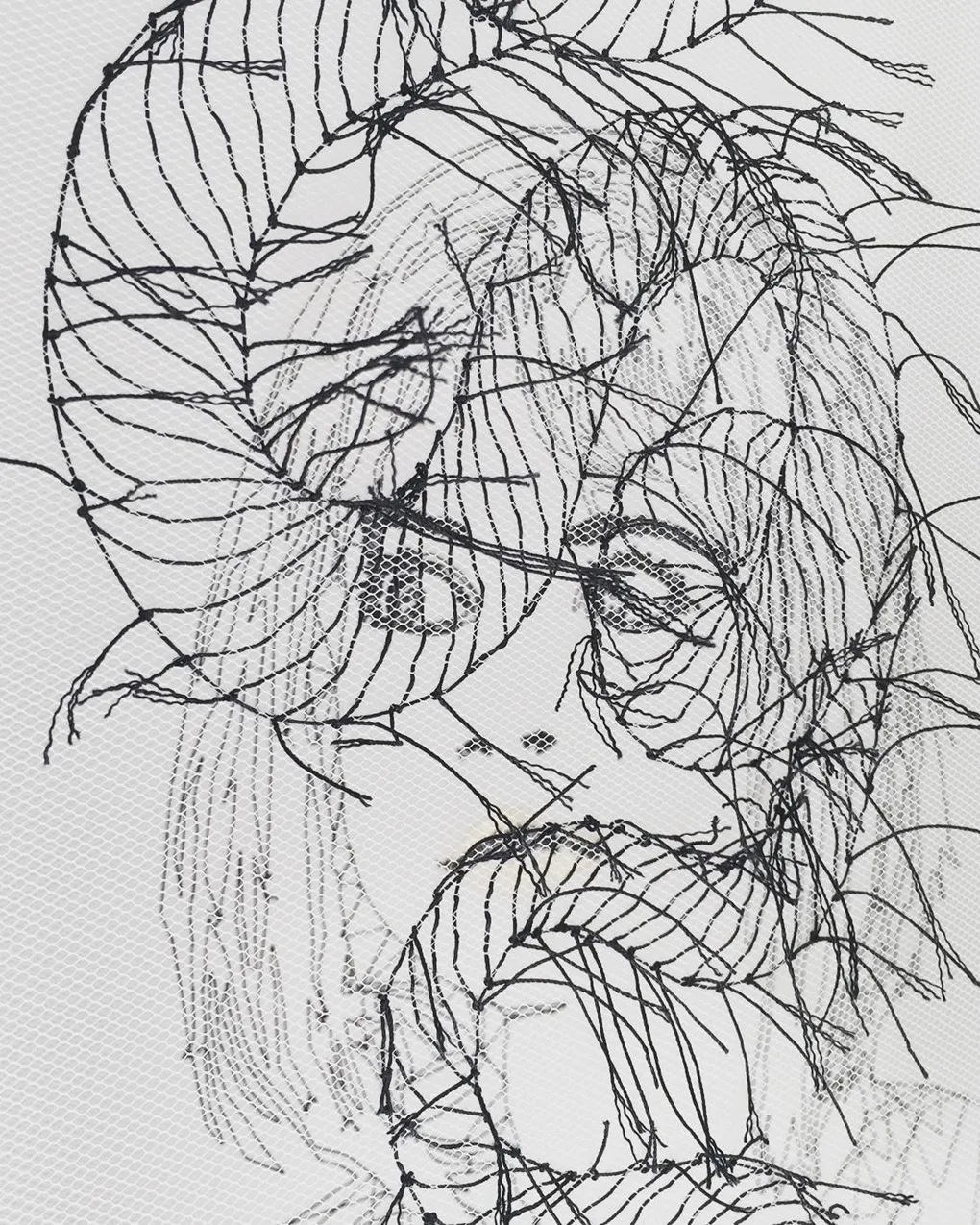
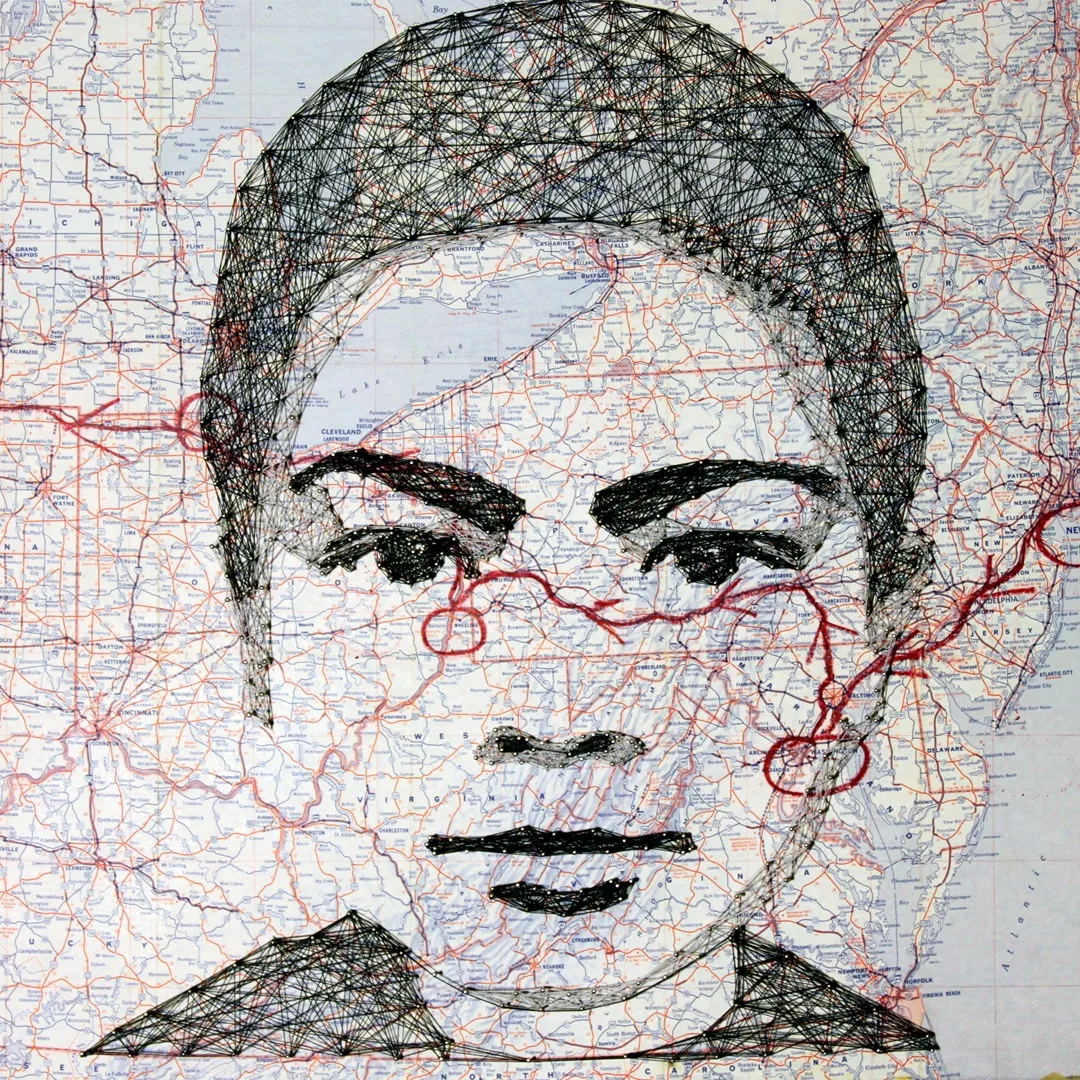
Art to decode life
My work can never be separate from my life. Art is my instrument for decoding my life – my present and my presence seen in a multitude of ways. My art can’t be encapsulated into any one approach or style, and that’s why there are so many heterogeneous expressions in my works.
I imagine my map of inspirations and influences as a vascular system with the blood flowing all in the same direction, even if coming from smaller vessels. I don’t consider any one thing more relevant than others.
“Every step I’ve ever taken and everything I’ve ever seen is influencing me.”
When my mother got sick and sadly died, I needed to understand what had really occurred. It was such an enormous loss, so I used my artworks to explore this sense of emptiness. And when I developed my business MINI Art For Kids, I transformed my experience as a mother into a line of tactile artworks for children.
Lately, I’ve needed to explore new techniques – some quite distinct from fibre art – and I’ve achieved this by organising workshops in my studio, which has had the added bonus of enriching my daily life with ‘real’ relationships.
“For me, art is a way of approaching life, fulfilling my imagination and creating worlds.”
Pamela Campagna, Thread artist
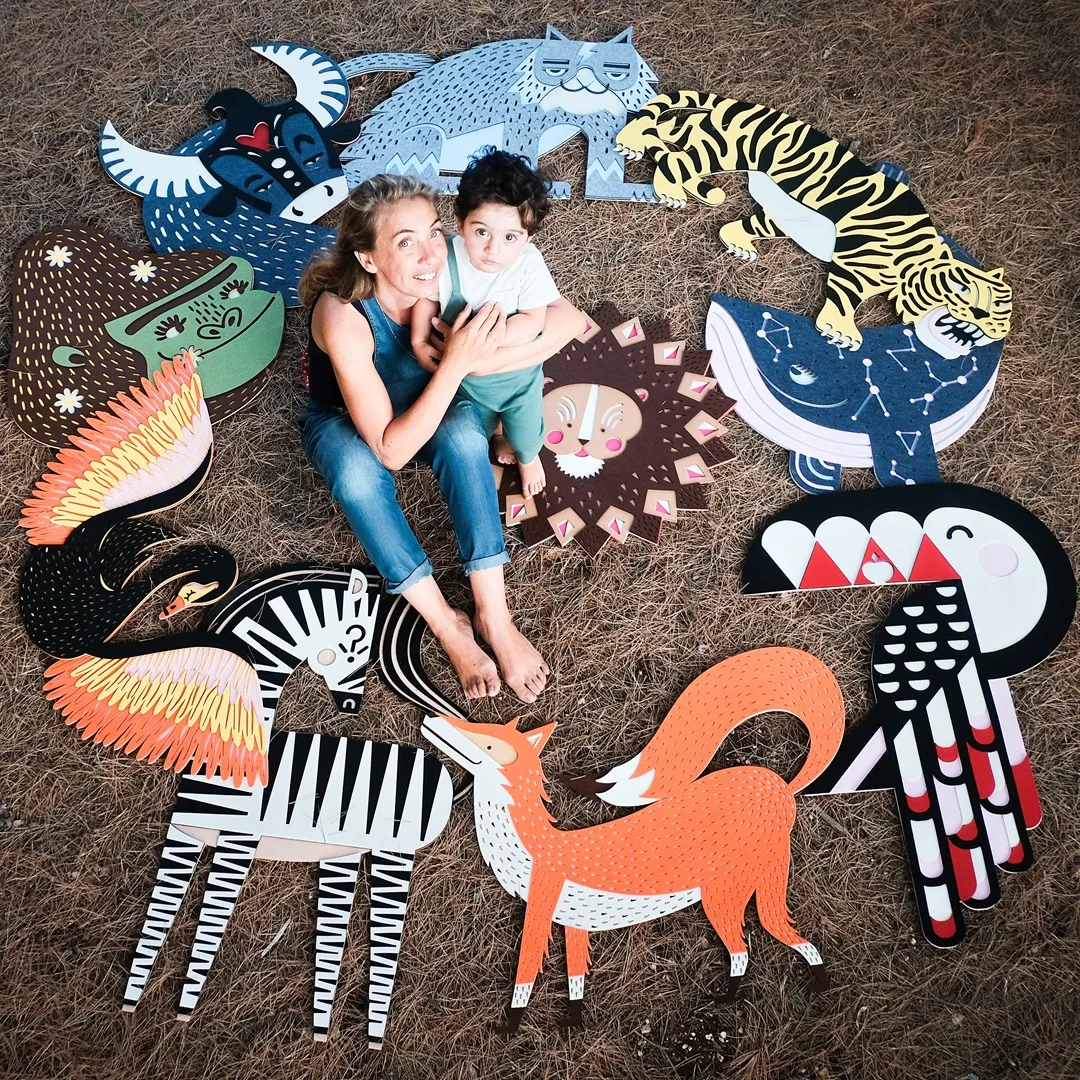
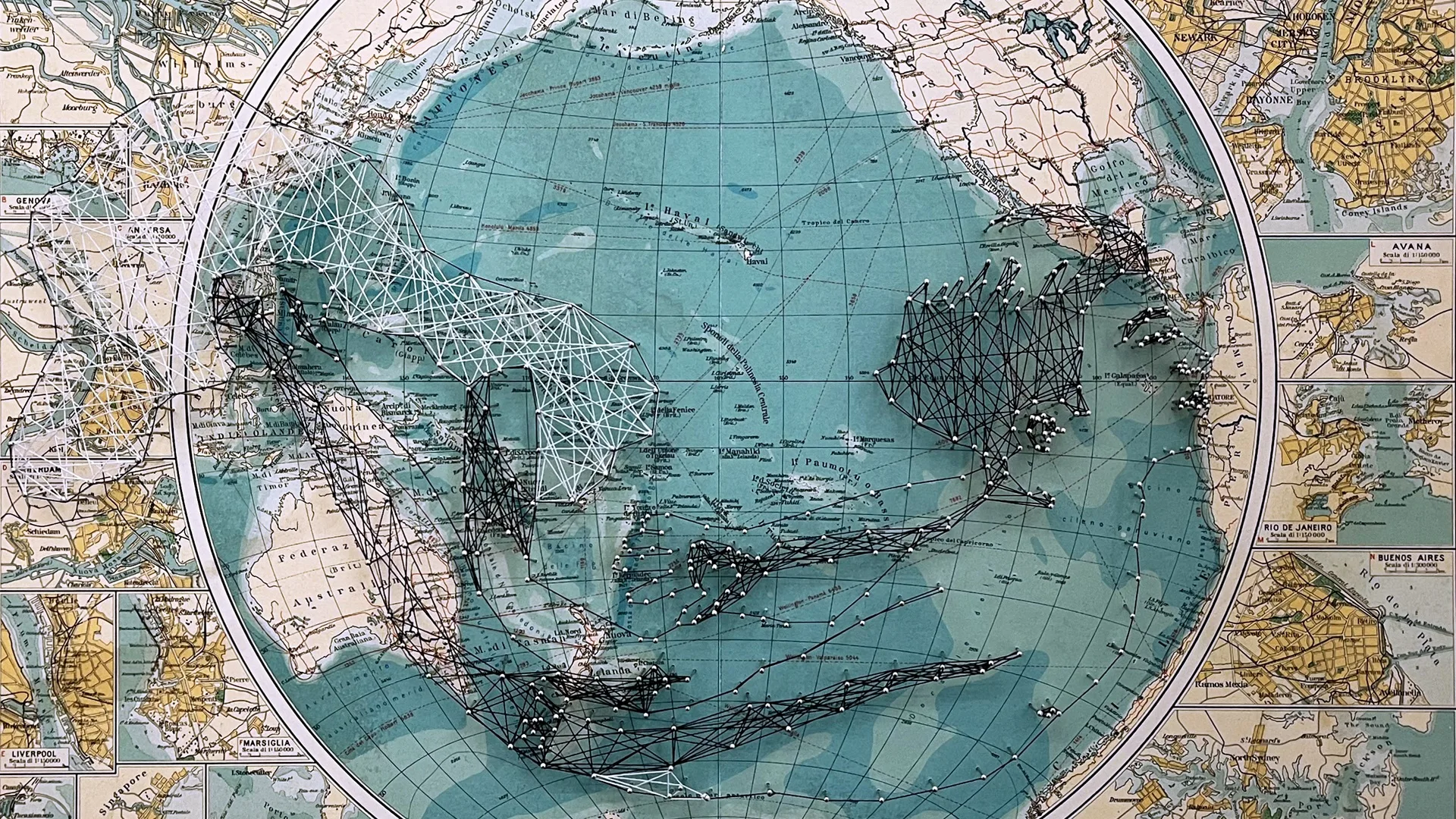
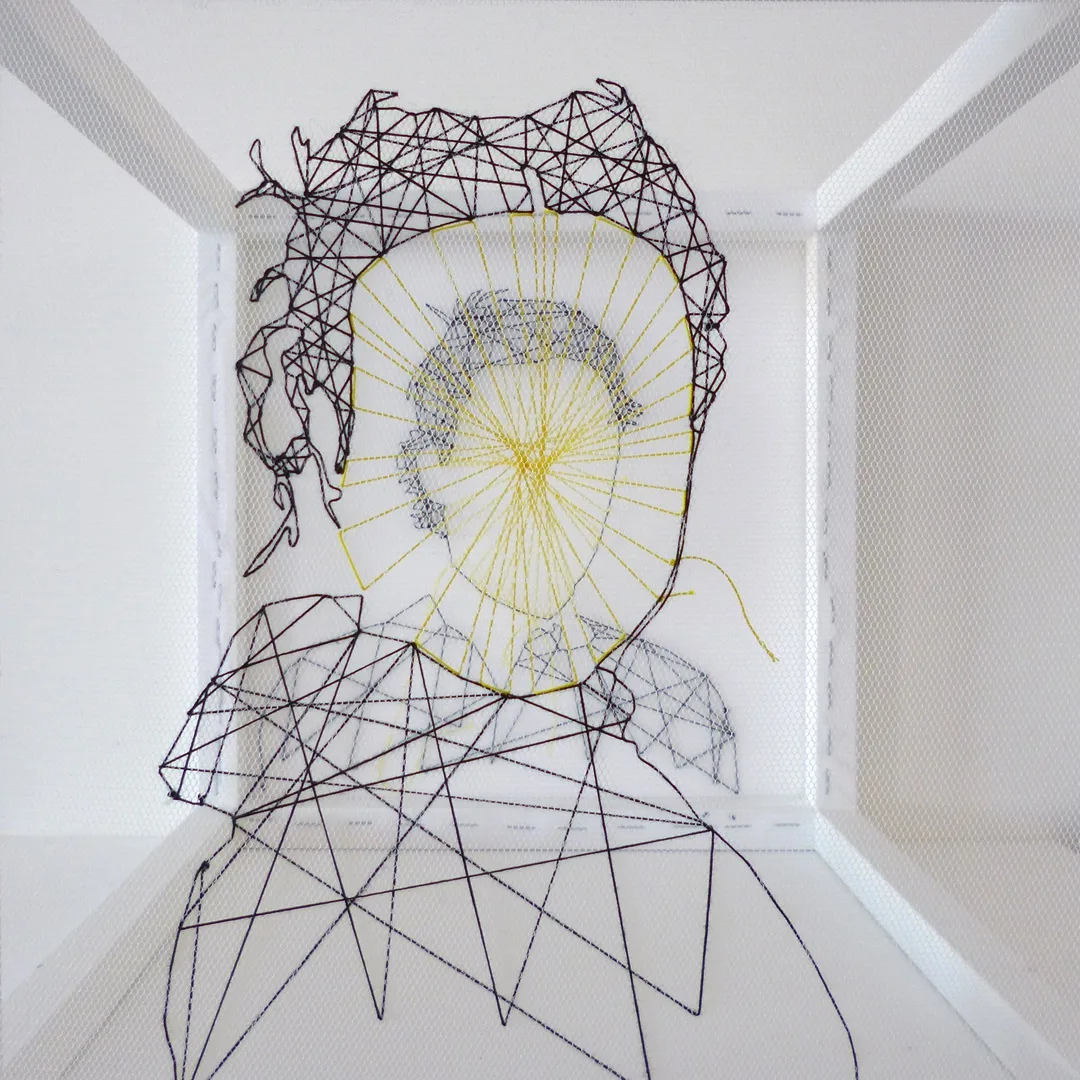
Starting out with textiles
When I originally started working with textiles, my aim was to build complex shapes with just a single thread, using weaving techniques to connect both physically and metaphorically.
As a graphic designer, I’d been working with visual metaphors, expressing concepts through the use of decontextualisation of specific materials and gestures. There was a time when I wanted to deal with the idea of family, particularly working with a specific image of my mother’s family… It all started from that.
I’ve been prompted in my work by qualities I saw in the amazing trousseaus my parents had from their mothers. They were so carefully embroidered over many hours and communicated such a deep sense of grace, purity and faith.
Another aspect of my approach probably comes from the chemistry experiments we did in the science laboratory at school. I developed a deep curiosity and fascination for the triggering of cause and effect processes.
All of the ‘design’ aspect of my art is around creating something that has a free outcome, in the sense that the final appearance is subjected to many external factors including the viewer’s own point of view. One example of this is in my White Noise series.
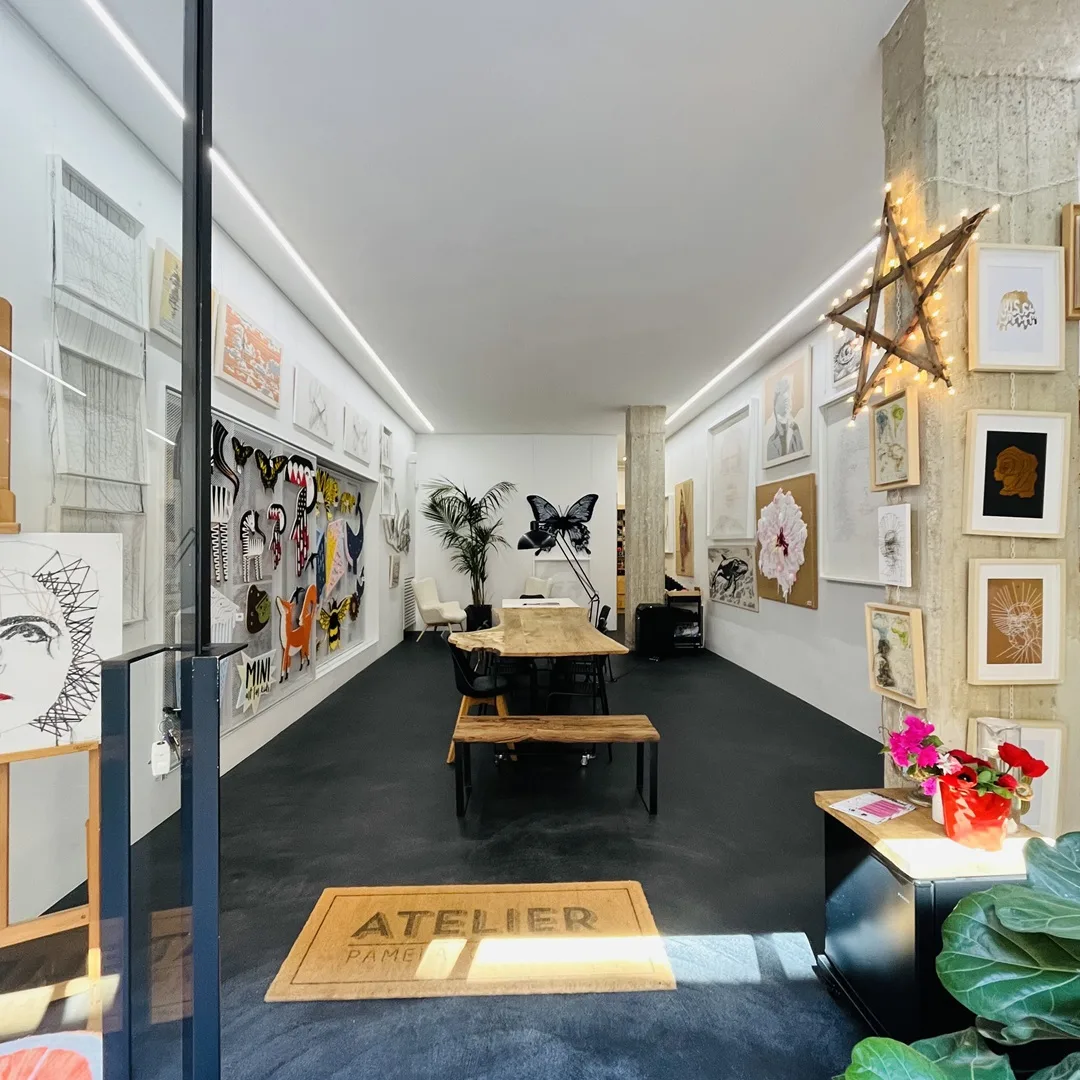
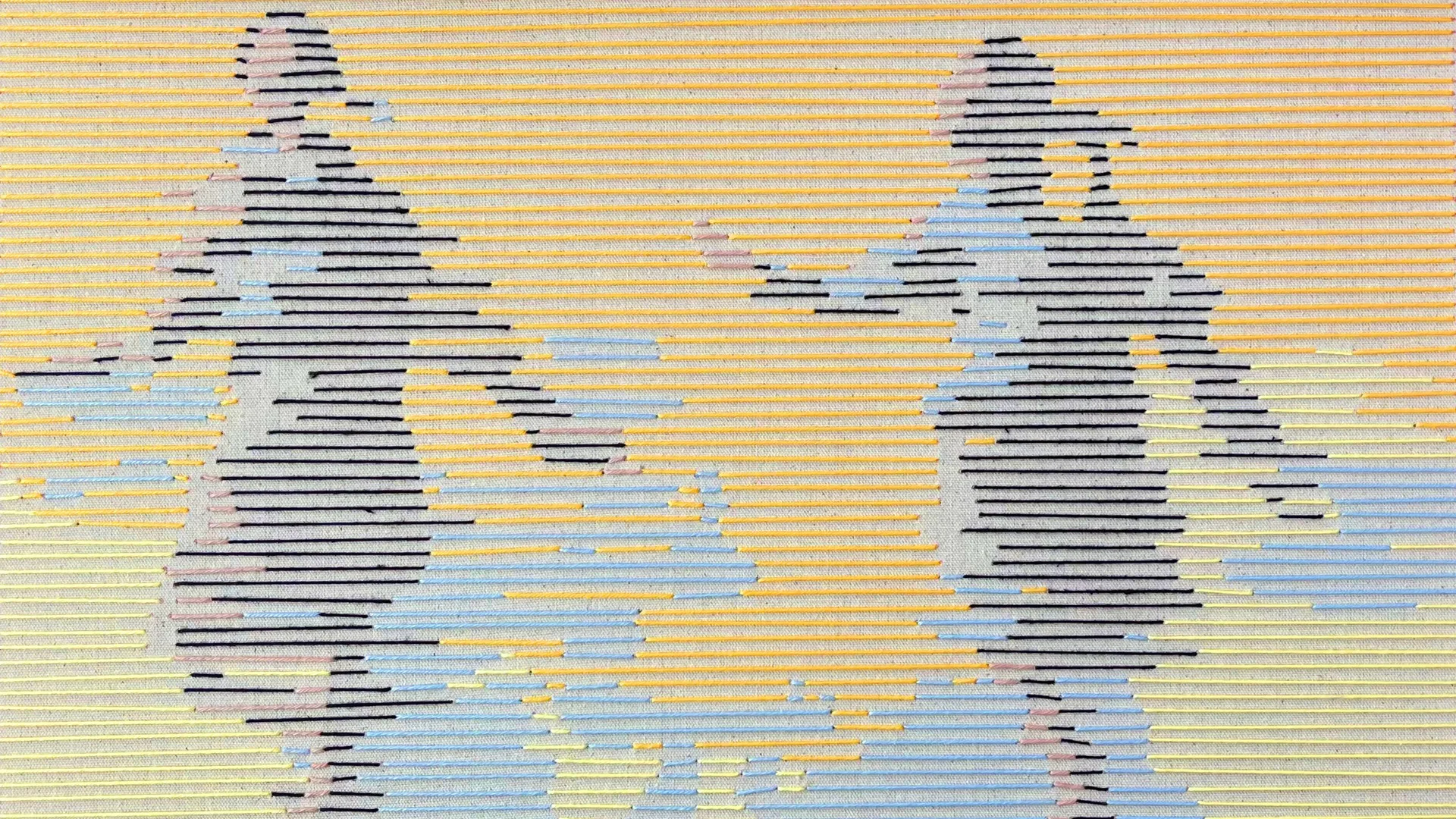
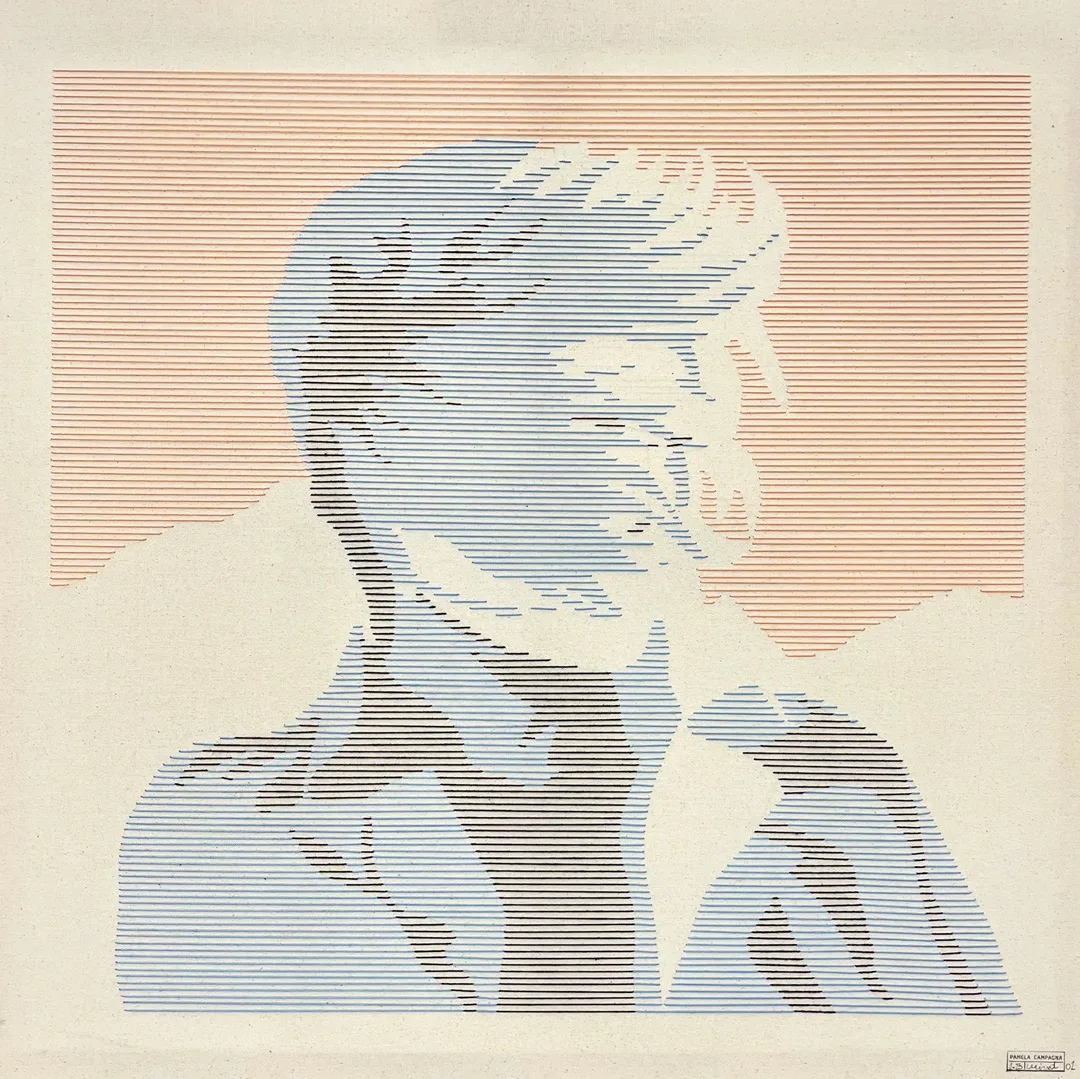
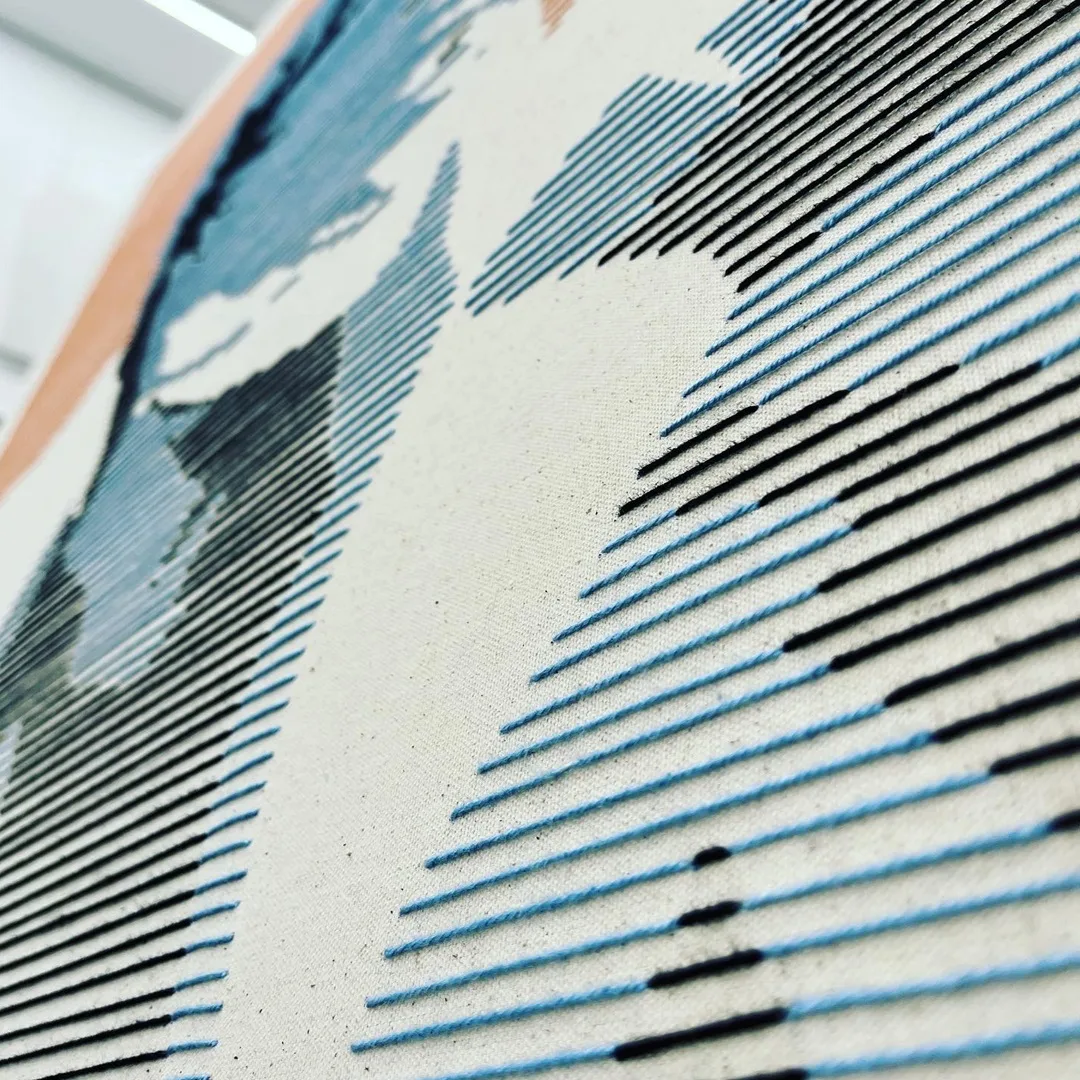
Becoming an artist
Initially, I studied economics, while simultaneously developing my interest in art. That included going to shows, drawing, transforming, attempting, researching and trying to match the two interests together.
After my graduation in 2001, I took an internship in New York working for Franklin Furnace Archive. I then went to Florence to study a Masters in Management of Cultural Heritage and worked for Cittadellarte Fondazione Pistoletto in Biella in their economic office.
It was the beginning of a step into the art world while still trying to use my studies. But I was still always designing, painting and experimenting.
I founded an artistic collective in Milan, called HEADS, making live paintings mixed with video art, makeup and music. When I met Tomi (tOmi) Scheiderbauer and CALC (casqueiro atlantico laboratorio cultural: a group of artists, a cultural association and design company), I started working with them as a graphic designer with a little involvement in art and architecture.
After seven years, the artistic part began to take over. At the moment those two worlds are inseparable, and they totally influence one another.
Motherhood & art
Being a mother of a young child, a wife and an artist at the same time is not an easy thing, especially in Italy where there’s not a real system to support artists or autonomous working mothers.
So in the first three years of my son’s life I mostly concentrated on him. I didn’t have time for exploring and experimenting. Nevertheless, that period was beautiful and truly magical.
Through those years of observing my son, I dreamed up and developed a wonderful project: a playful brand called MINI Art For Kids, the main product being a line of tactile artworks made from laser cutting and layering superposed, colourful felt.
It came from a positive intuition and was a great success. It was really satisfying to be contacted by people from all over the world wanting to buy from the different lines I’d created.
But at a certain point, I missed the language and mystery of art being a part of my daily routine, and I realised I didn’t want to be just an entrepreneur. So I went back to my art and experiments, my son grew up a bit and I organised my day in a different way so that I could again pick up the ‘threads’ of the experimentations I’d left behind.
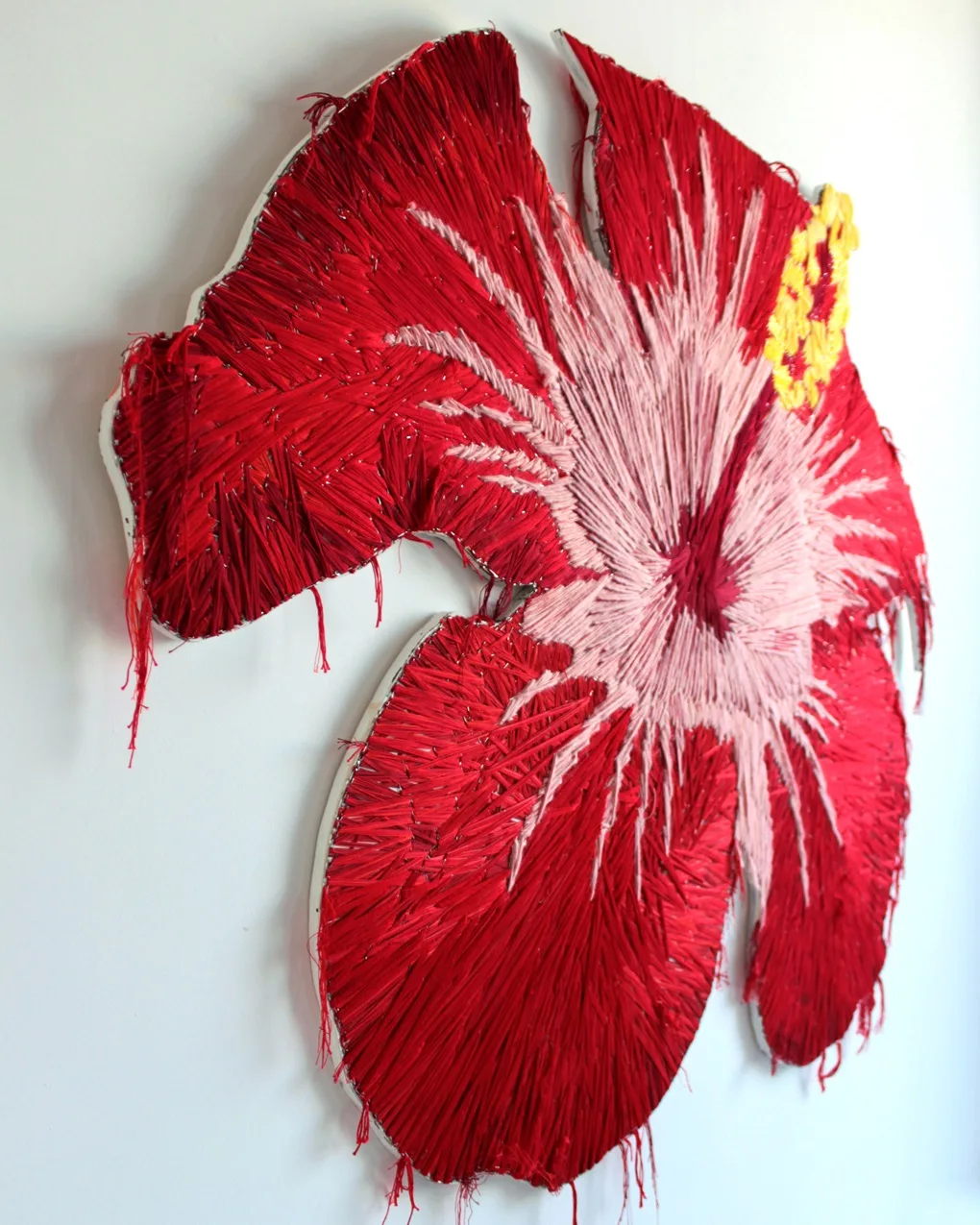
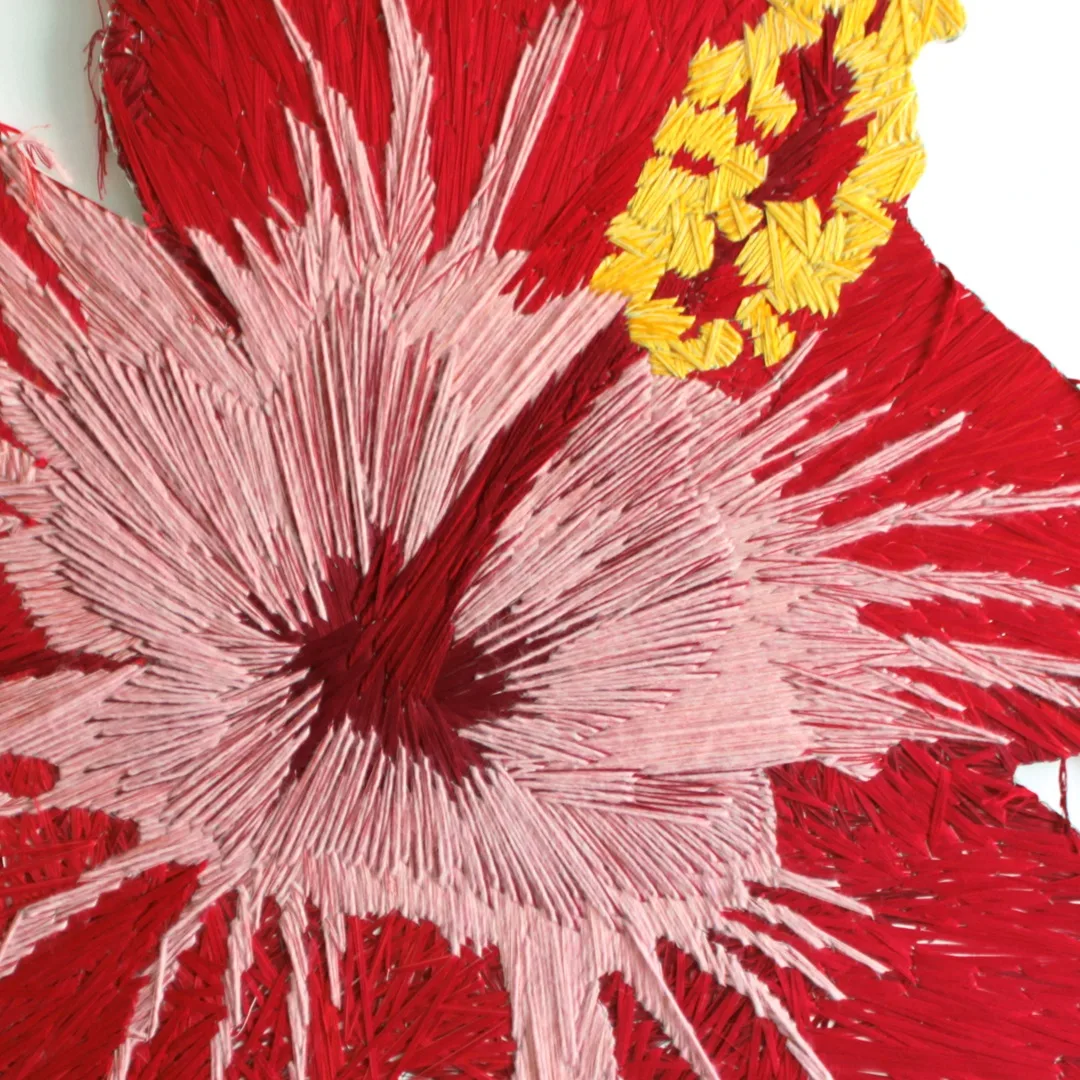
Sparks that become art
Mostly my art comes from the urgency of seeing something new, something that’s previously been missing from my outlook, absent from my emotional landscape. Sometimes I have a clear message to communicate, sometimes it’s a suggestion – an emotion that can’t be defined. Depending on that, I decide the subject, the technique and materials, and then I go deep into creation.
I always start from a sketchbook. I need to write down just a few lines and a few words to figure out the metaphor I’m looking for or the intention. Based on that I decide the technique I will use. There’s often a narrative that I’ve decided, but nothing is too defined. I always leave it open for accidents.
Depending on the technique I’m going to use, I have a specific way in which to draw the artwork. For every technique, I have a method of bringing a project forth.
Then I begin to work with my iPad and stylus. Since I often work with superposition or layering of images, it’s useful to make samples to get an approximate idea of the outcome. But, of course, nothing is totally defined.
“I like to think of my process as a ritual in preparation for the miracle to come.
This ‘open’ part of the creative process is exactly the reason that pushes me to begin.”
Pamela Campagna, Thread artist
I believe that there’s never one point of view, and no one point of view can last forever. I aim to create something that can change with us, and generate doubts and new thoughts or keys to understanding our present.
“My art has to be seen from different perspectives – it helps to blink the eyes or squint.
I ask for some effort from the viewer, because nothing in my work is overtly obvious.”
Pamela Campagna, Thread artist
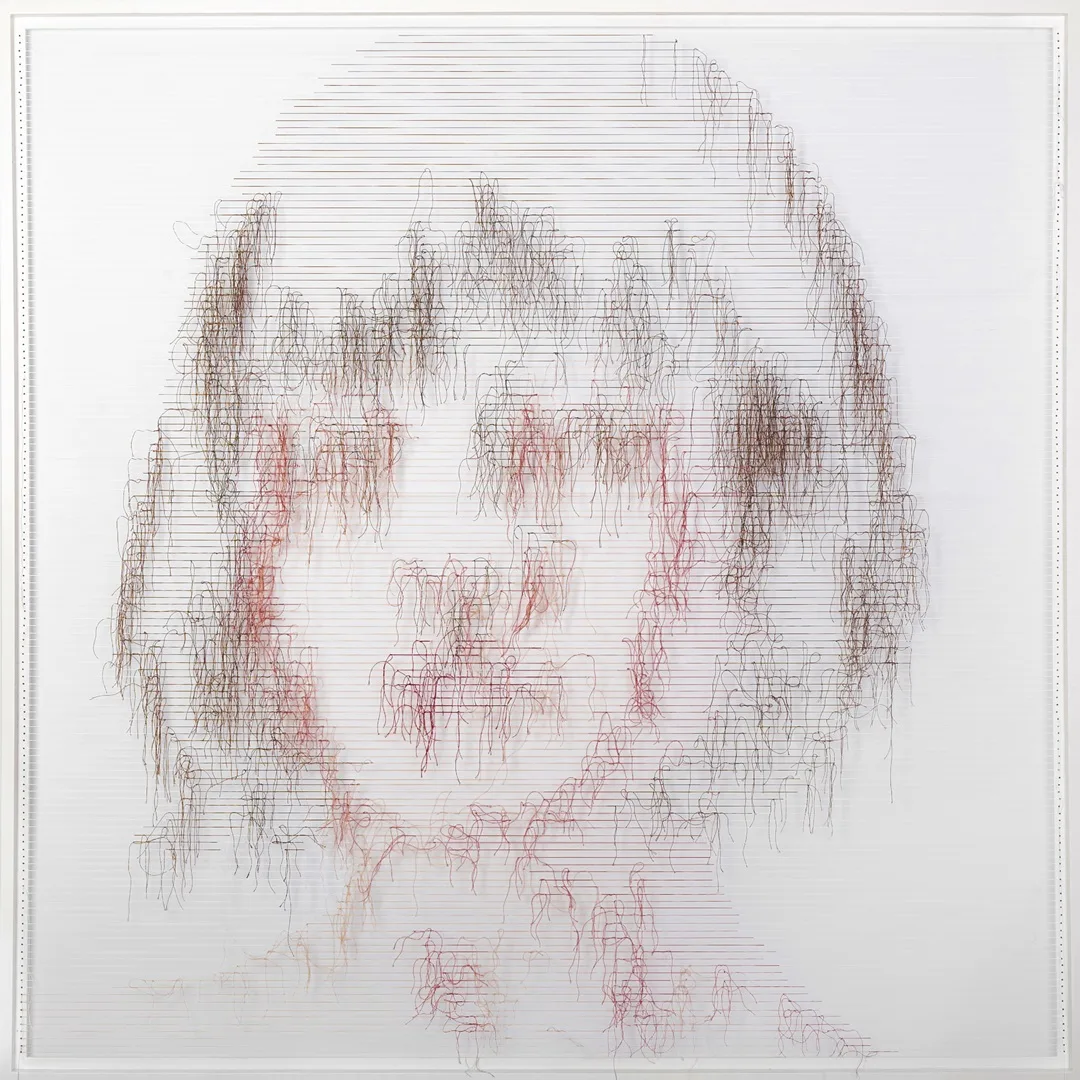
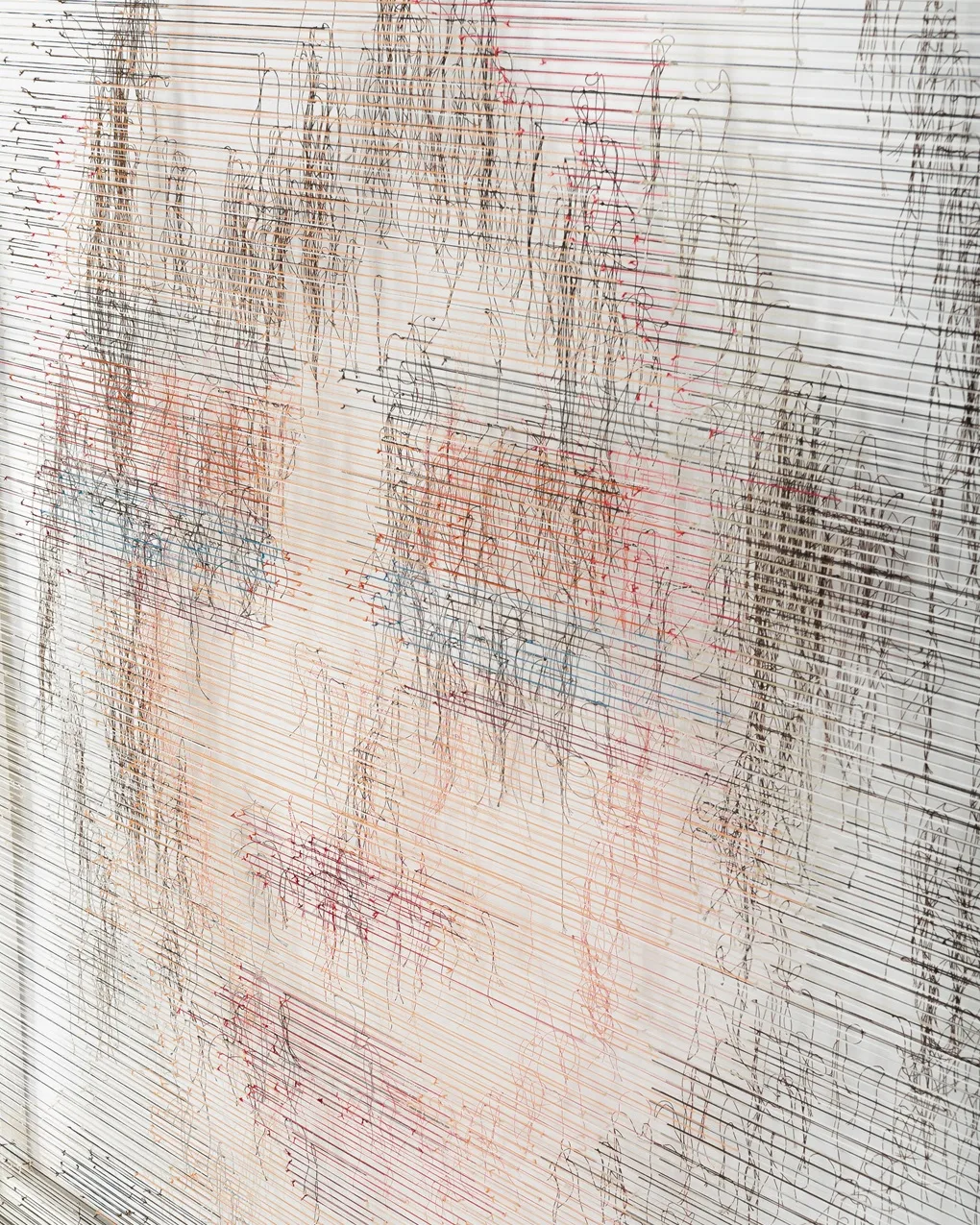
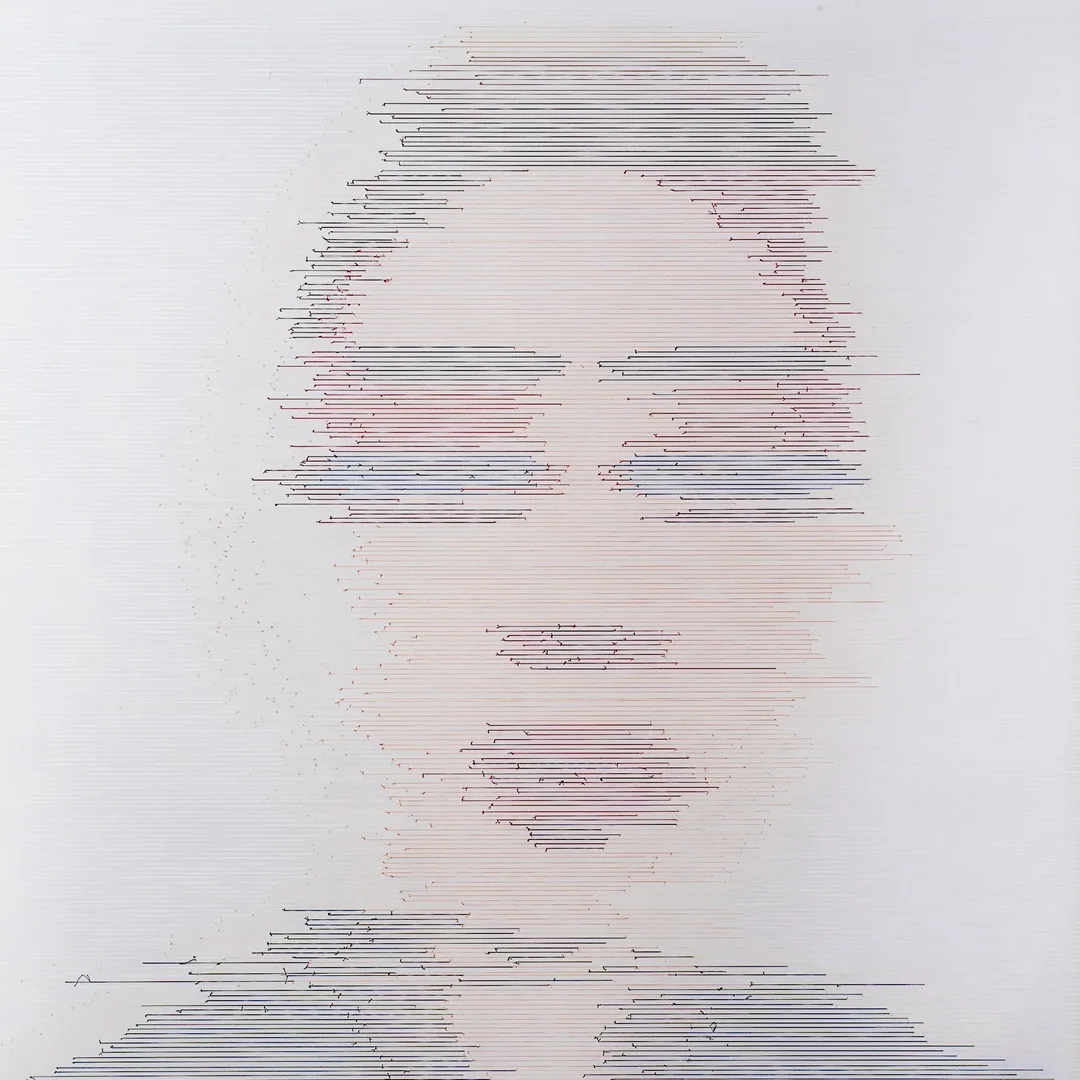
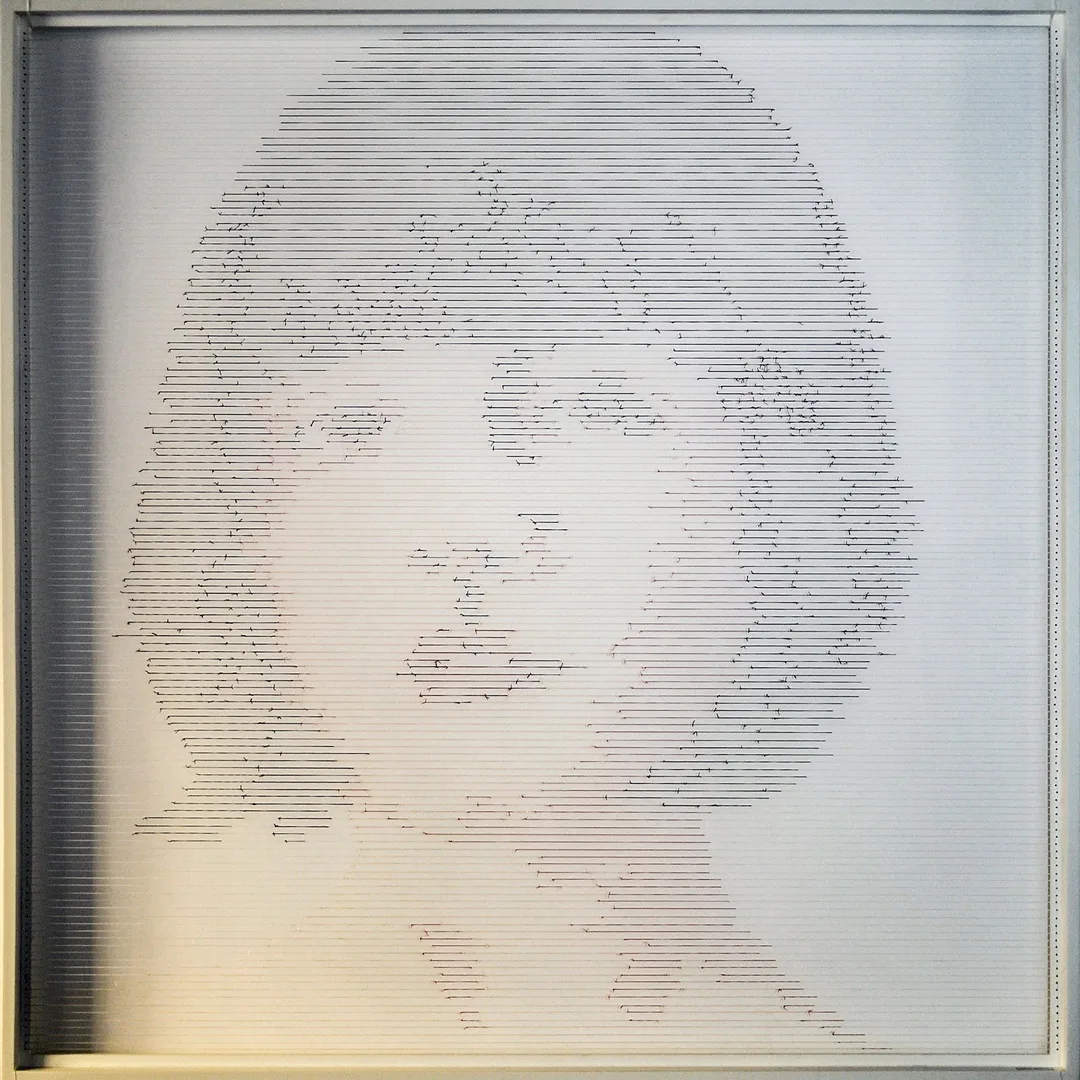
Optimum fibre
I have a wonderful technical sponsor, Cucirini Tre Stelle, based in Milan. They provide me with many different kinds of high quality fibres in infinite colours and shades.
This is absolutely great because it pushes me to explore how every fibre can influence every work, depending on the thickness and luminosity.
For many years, I’ve been developing embroidery, weaving, tufting and bobbin lace techniques based on using ikat fabric, a material woven using dyed yarns to create patterned fabric. But often I disaggregate and minimise this concept to produce something which is both from the past and the future at the same time.
For example, in the BIG KNOTTHING series and the MIRAGE series I’ve worked in the warp and weft separately, leaving space between every line to give the image a rarefied appearance, close to the feeling of a distant memory.
In the MACROembroidery series I’ve brutalised the fine gesture of embroidery, fixing a continuous bundle of wires, made of five or six different threads, with a staple gun.
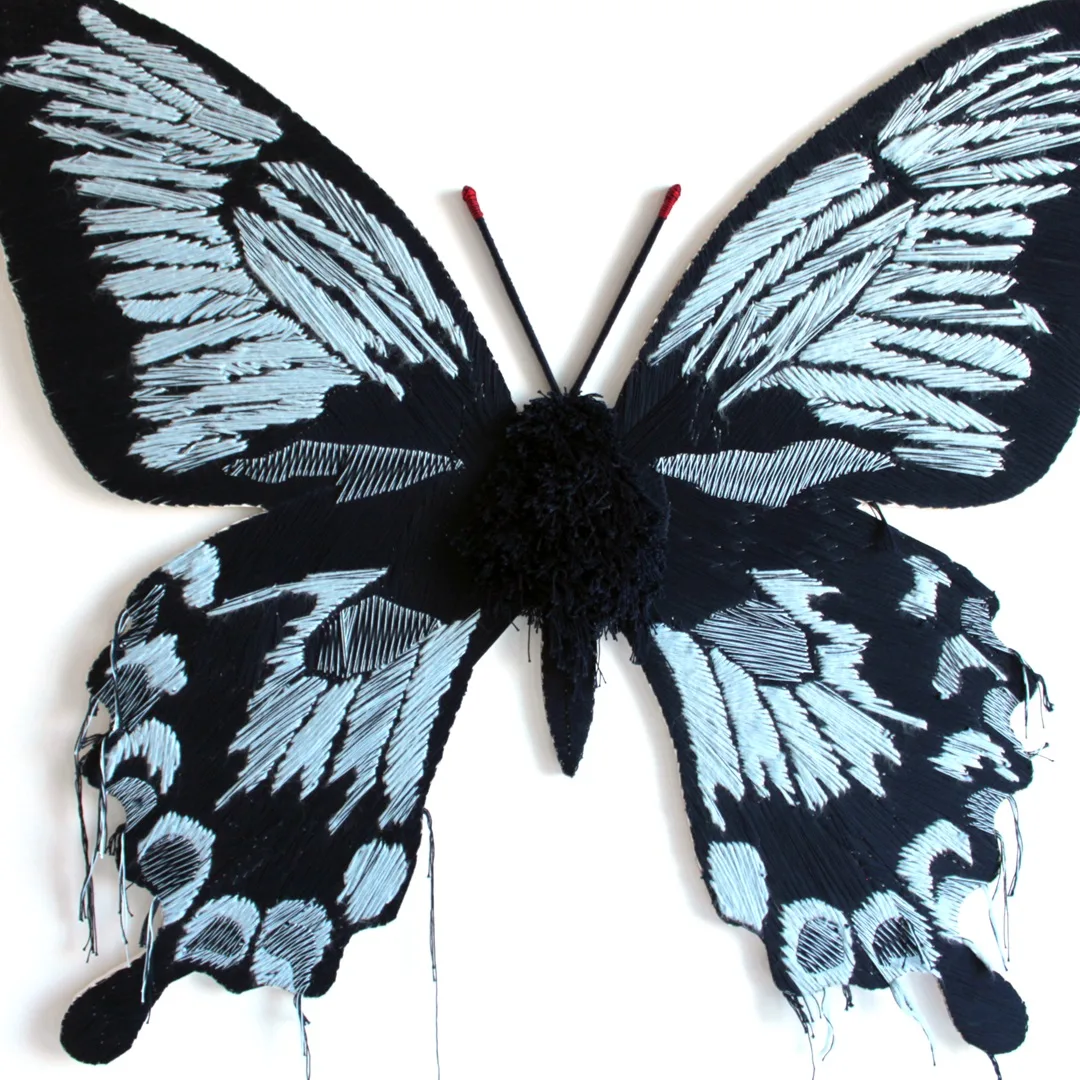
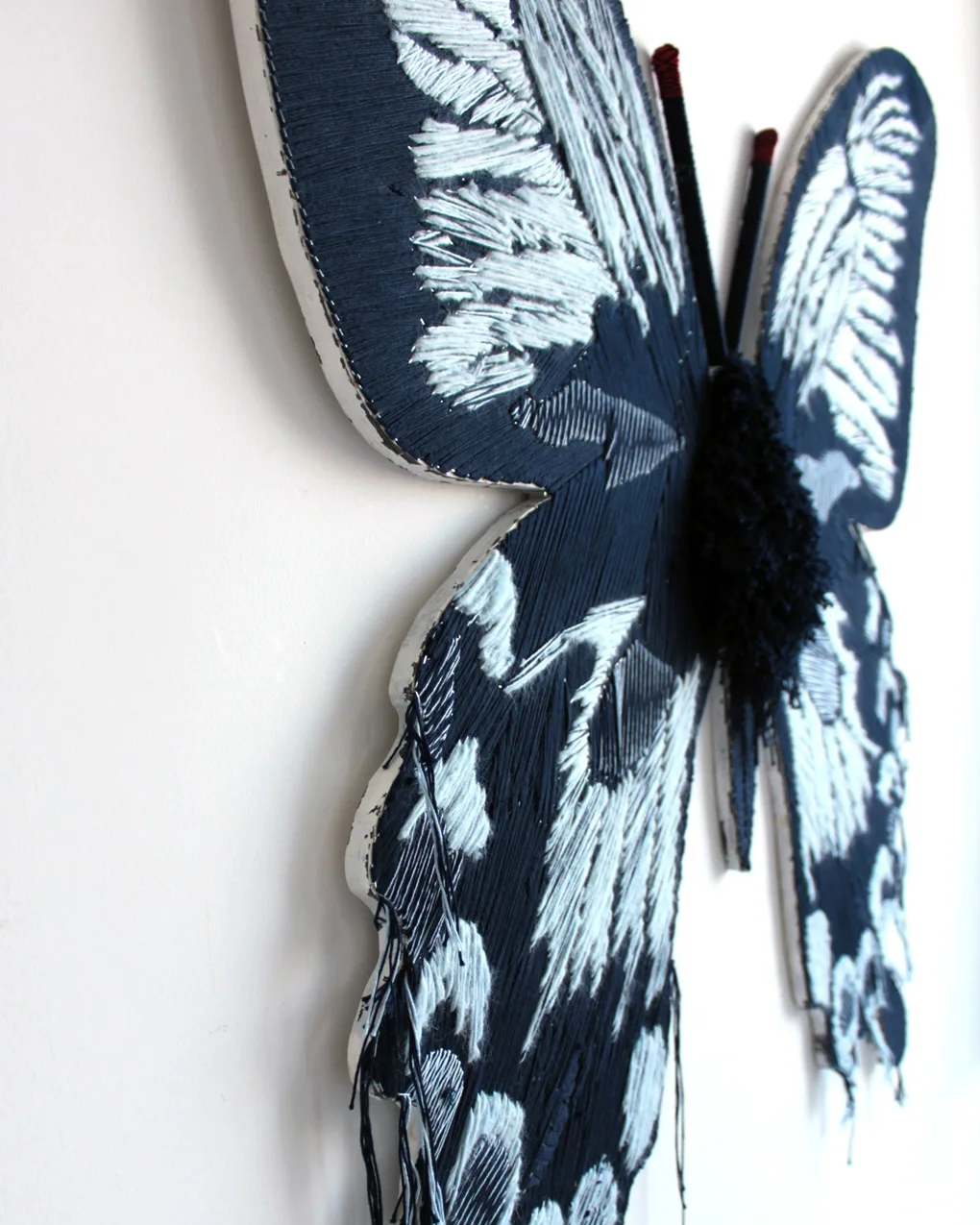
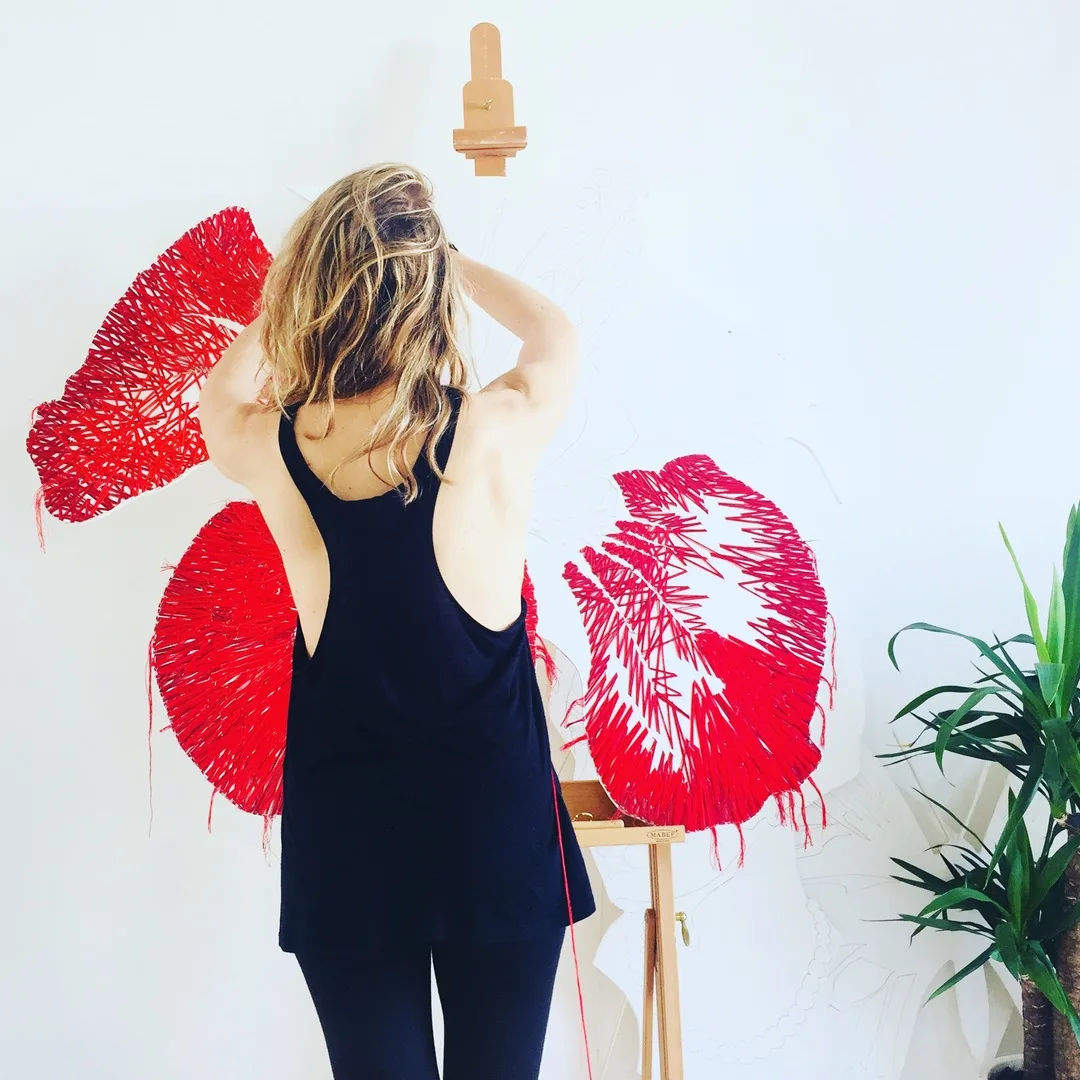
Be true & flexible
If I had to offer advice to anyone, I’d say be honest. Don’t copy, but transform and be respectful of the ideas of other artists.
Find your real tool of expression and go deep into it, but at the same time don’t be its hostage – and change direction if you feel like it. Remember that art is a profession and a way of living and relating with your surroundings.
The biggest challenge for me is staying authentic to myself and feeling deeply what I’m saying with the piece I’m creating.
Authenticity is really difficult when it comes to commissioned works, which for years were a part of my practice. That’s why I’ve now greatly reduced the time I spend on those.
It’s difficult being a fibre artist right now, working with ‘real’ material, which requires lengthy consideration prior to doing the work, many hours in its creation, and then once it’s online it is eaten up by the web very fast.
We’re bombarded every day with images (real or AI-generated) that influence the sense of our work. Generated images can look like super elaborate crafted artworks, not actually existing in reality, and would require an enormous amount of energy to be realised in textiles.
“My greatest challenge is to keep the flame of my passion for art alive. As a woman in the cave fighting the beasts, I use that fire to keep safe and secure from the soul thieves.”
After having concentrated on local dynamics, private commissions, workshops and my project for kids, I feel that now is the right time to put together a show and an itinerary project abroad. I’m imagining, also, a more dimensional and collaborative approach. That’s my desire … but let’s see what life brings to me.
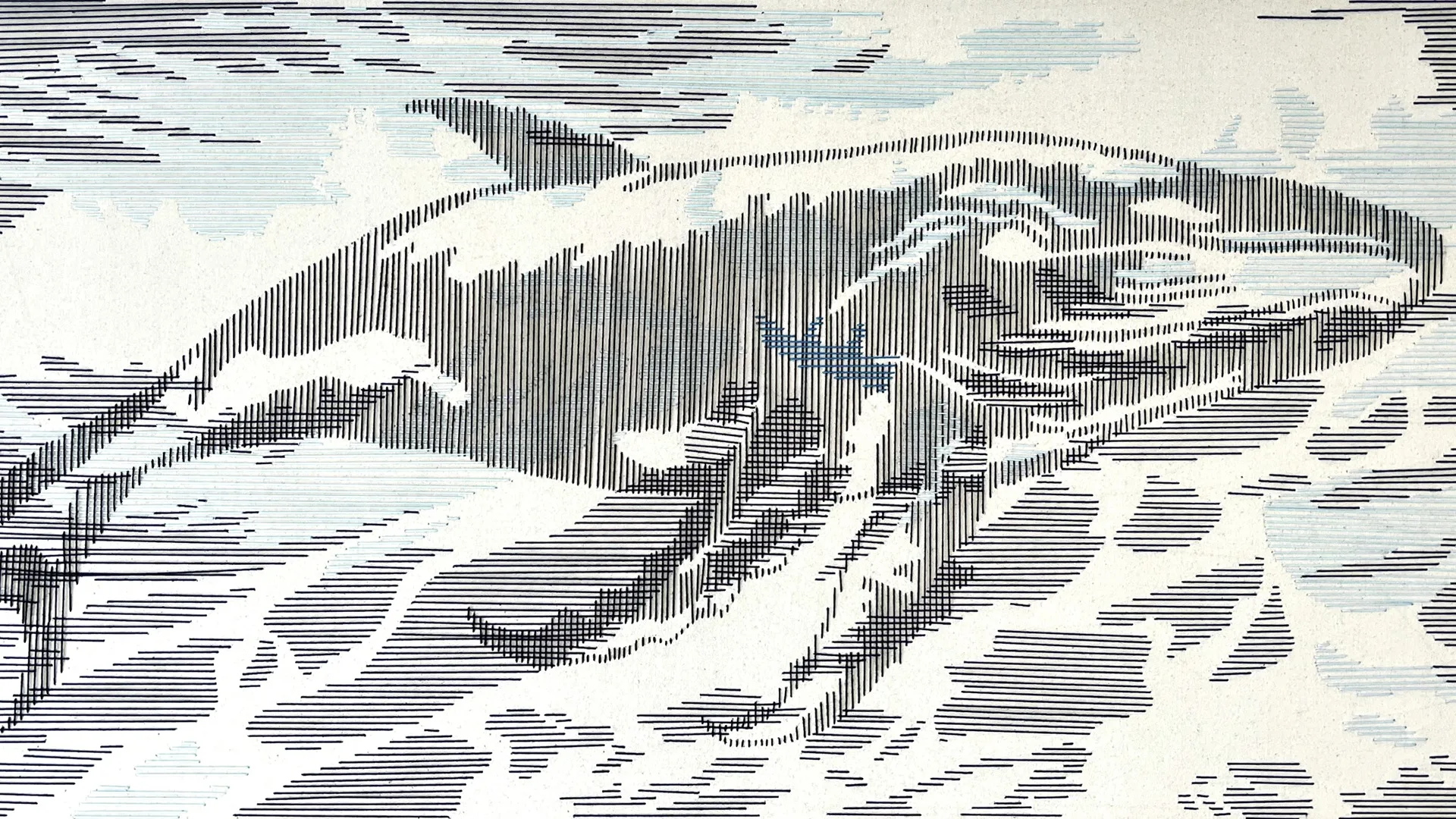
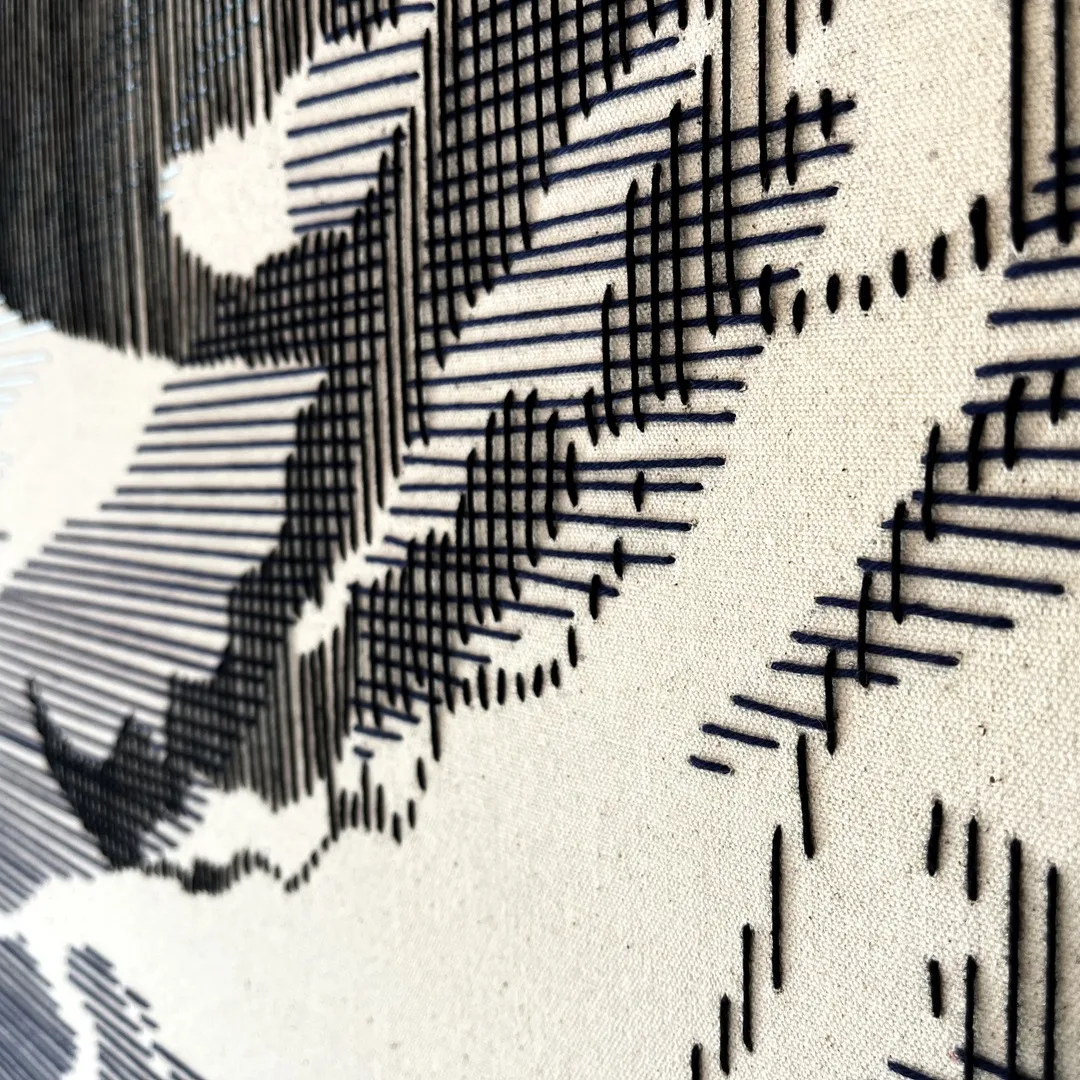
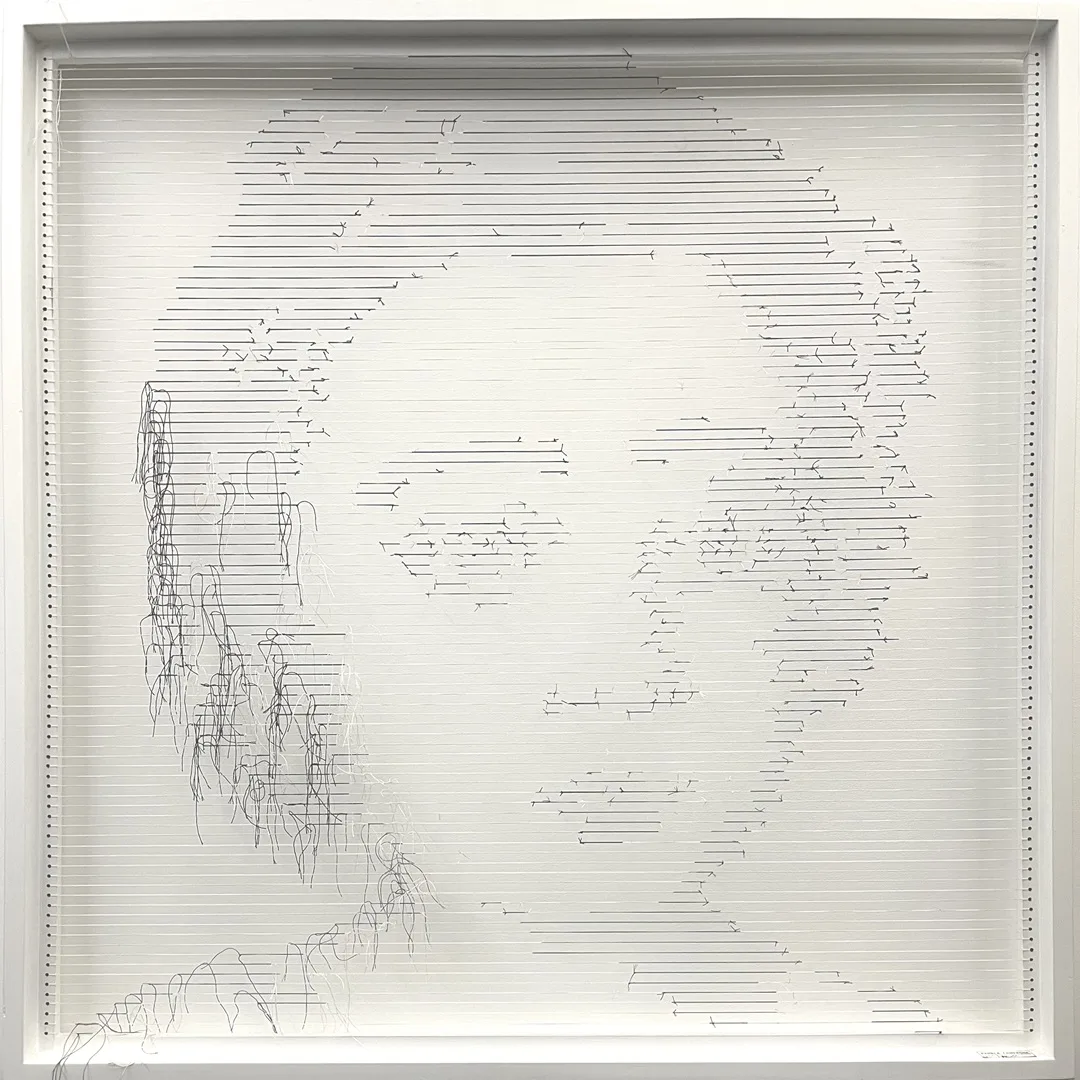
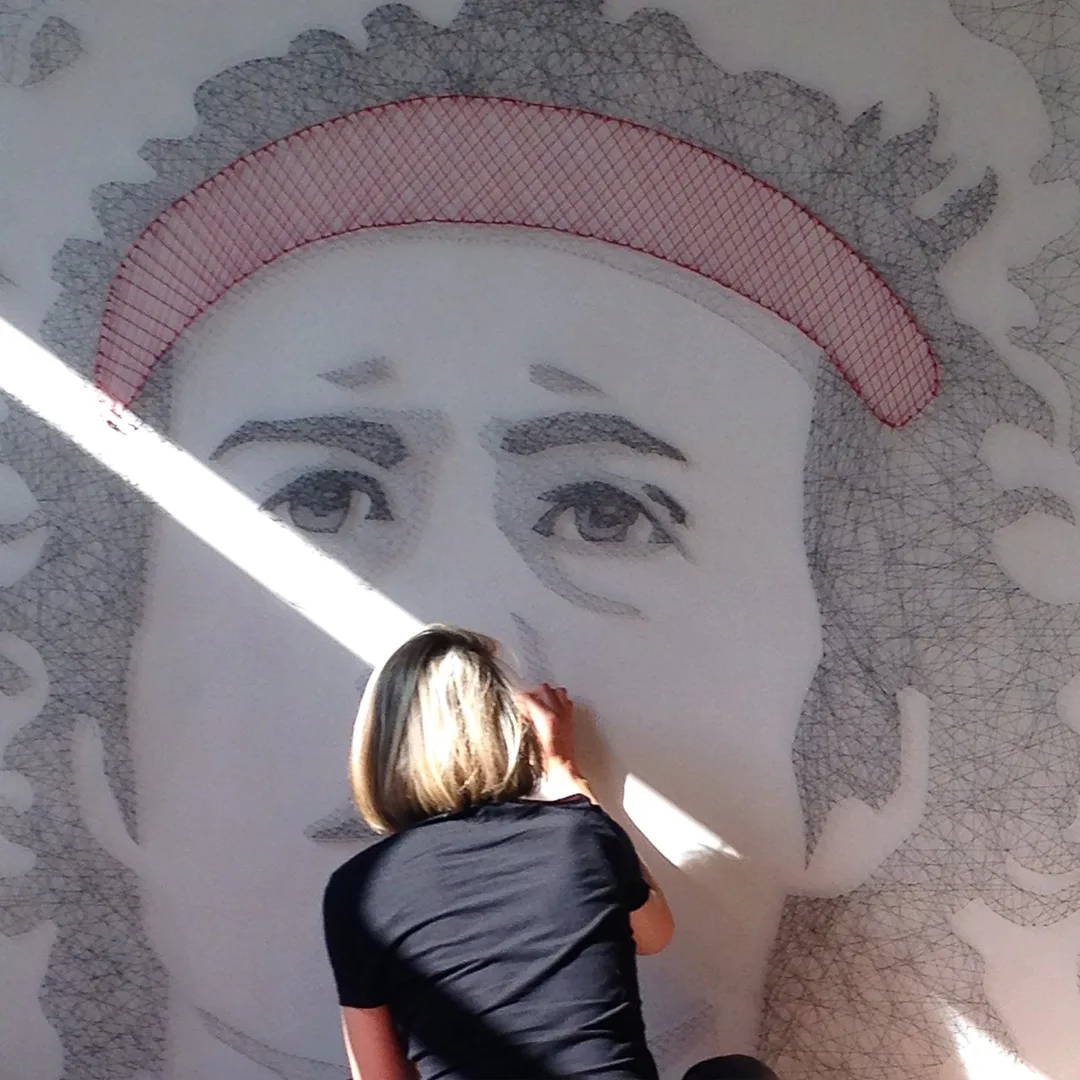
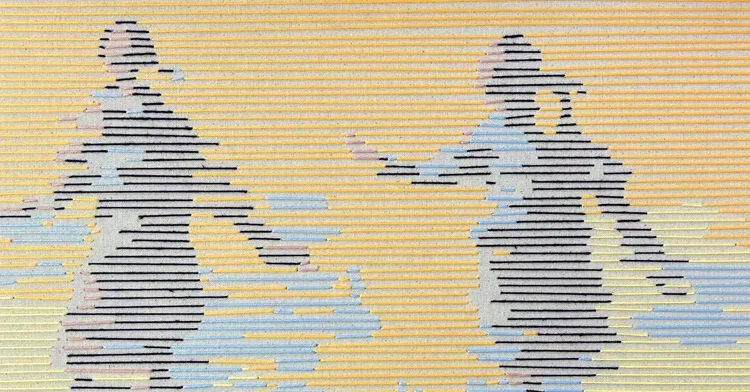

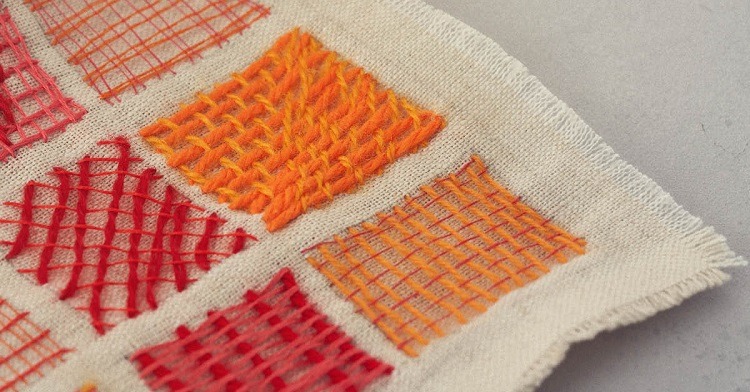
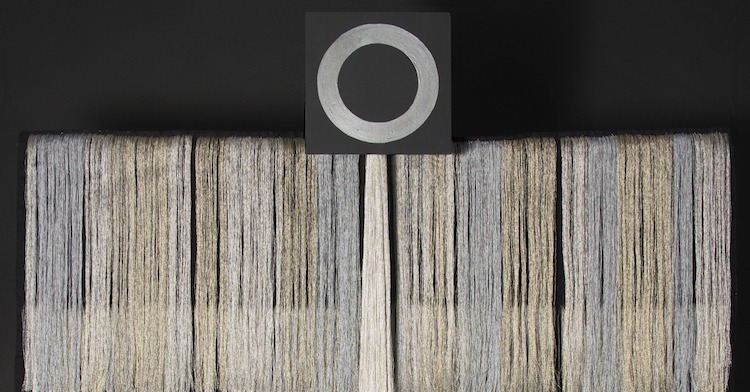
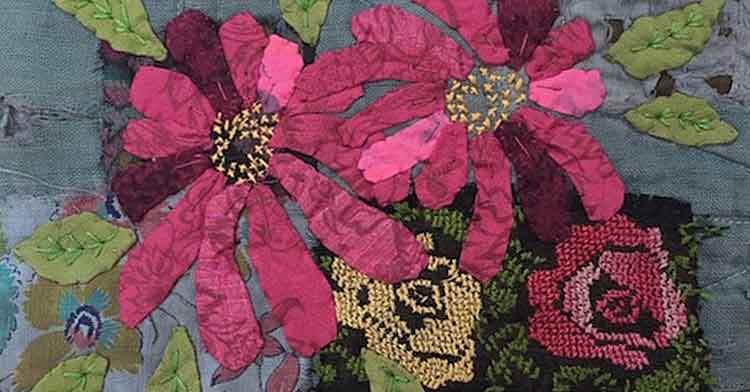
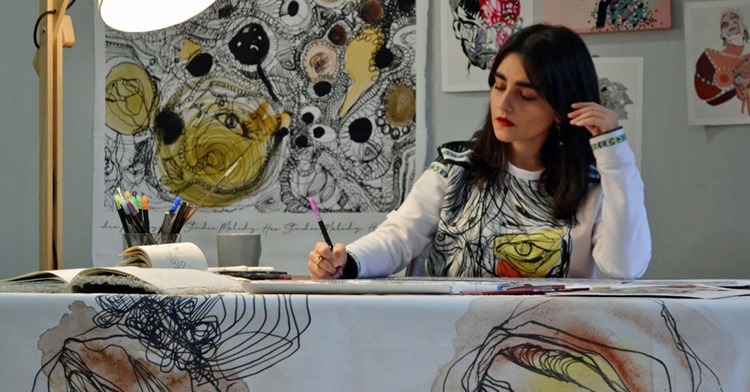
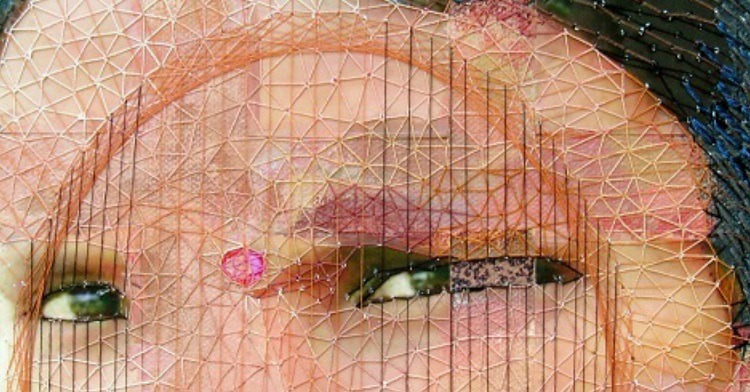
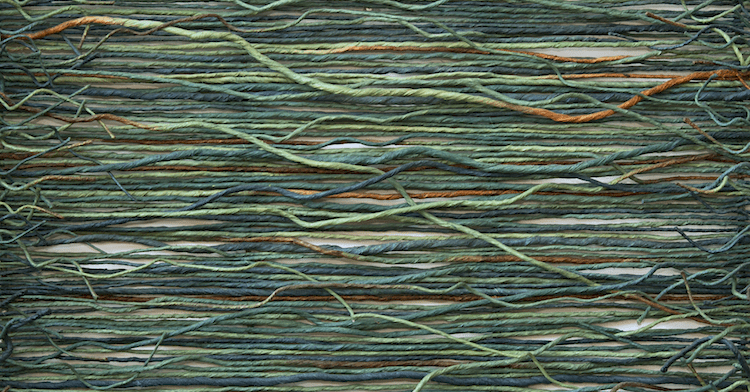
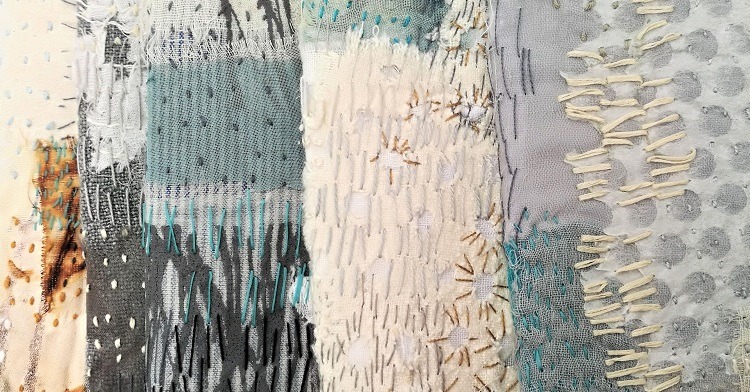
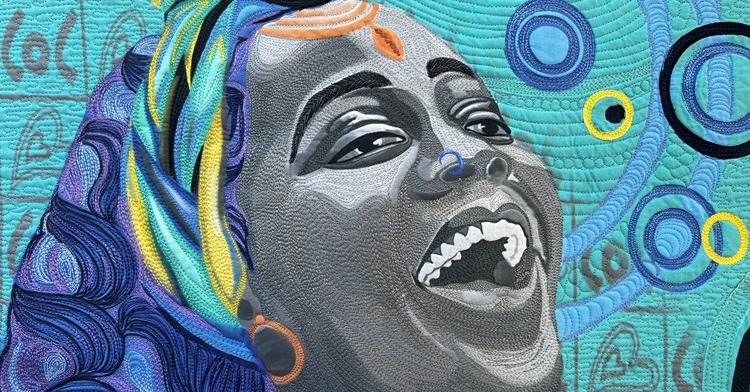
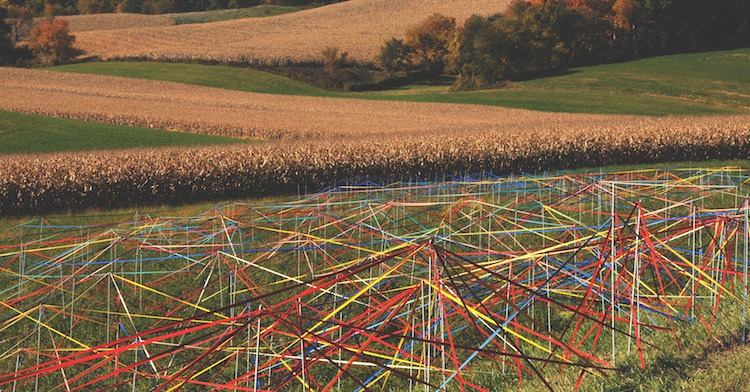
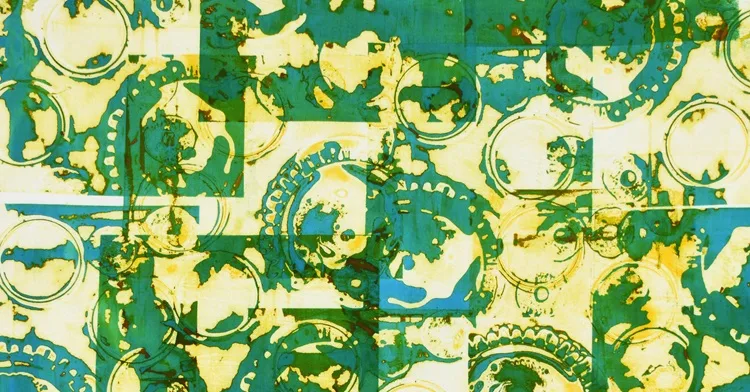
Comments